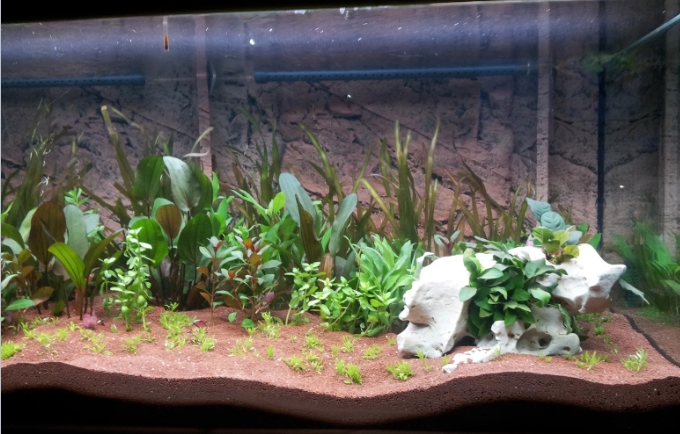How to Make a Turtle Tank: A Comprehensive Guide
Creating a perfect habitat for your turtle requires attention to detail and a good understanding of their needs. In this comprehensive guide to how to make a turtle tank, we will walk you through the essential components of a turtle tank, how to design a comfortable habitat, and the necessary maintenance practices to keep your turtle happy and healthy.
What Are the Essential Components of a Turtle Tank?
Equipping your turtle tank with the right components is crucial for your turtle’s wellbeing. Here are the key elements you need to consider:
How Do You Choose the Right Tank Size?
Choosing the right size for your turtle tank is vital for your pet’s comfort and growth. A general rule is that each inch of the turtle’s shell length requires 10 gallons of water. For instance, a 4-inch turtle would need a 40-gallon tank.
Space for Swimming: Turtles need plenty of room to swim and explore. A cramped tank can lead to stress and health issues.
Future Growth: Turtles grow over time. Choose a tank that will accommodate their size as they mature to avoid frequent upgrades.
Height Over Width: Consider a tank that is wider rather than taller. Turtles enjoy swimming horizontally more than vertically.
What Type of Substrate Should You Use?
The substrate in a turtle tank isn’t just for aesthetics; it plays a role in the tank’s overall ecosystem.
Gravel vs Sand: While gravel is a popular option, it can sometimes be ingested by turtles, leading to blockages. Sand is safer but needs more frequent cleaning.
Bare-Bottom Tanks: Some turtle owners prefer no substrate at all to make cleaning easier and to avoid ingestion issues.
Natural Look: If you want a natural look, consider using large river rocks or aquatic soil, which can also support plant life.
How to Install Heating and Filtration Systems?
Turtles are cold-blooded reptiles and require specific water temperatures to stay healthy.
Water Heaters: A submersible heater helps maintain the appropriate water temperature, usually between 75-85°F, depending on the species.
Basking Area: Turtles need a dry area to warm up. A heat lamp above a basking platform should provide temperatures of 85-90°F.
Filtration: Turtles are messy eaters, so a powerful filter is necessary. Canister filters are highly recommended for larger tanks as they are effective and easy to maintain.

How to Design a Comfortable Habitat for Your Turtle
Designing a comfortable habitat for your turtle involves creating land and water areas, adding enrichment elements, and ensuring proper lighting.
What Are the Best Ways to Create Land and Water Areas?
Creating distinct land and water areas in your tank is crucial for your turtle’s health and happiness.
Basking Platforms: Use a floating platform or build a sloped land area with driftwood or rocks. Ensure the platform is stable and can support your turtle’s weight.
Smooth Transition: Make sure the transition between land and water is smooth, allowing easy access.
Dry Zone: The land area should remain dry to prevent shell rot and other health issues.
How Can You Add Enrichment and Hiding Spots?
Enrichment elements and hiding spots make the tank more engaging for your turtle.
Plants: Live or artificial plants provide hiding spots and create a more natural habitat. Choose non-toxic plants suitable for aquatic environments.
Caves and Tunnels: Decorative caves, tunnels, and PVC pipes can act as hiding spots, making the habitat more interesting.
Floating Toys: Floating toys or logs can provide stimulation and activity for your turtle.
Why Is Proper Lighting Important and How to Install It?
Proper lighting is essential for your turtle’s health, particularly for their shell and bone development.
UVB Lighting: UVB light is crucial for Vitamin D3 synthesis, which helps turtles metabolize calcium. Use a UVB bulb covering half of the tank.
Day/Night Cycle: Mimic natural light cycles by keeping the light on for 10-12 hours a day. A timer can help maintain consistency.
Positioning: Place the UVB light above the basking area to ensure your turtle gets the necessary exposure while basking.
What Maintenance Practices Are Necessary for a Turtle Tank?
Regular maintenance ensures a healthy environment for your turtle and keeps the tank looking pristine.
Water Changes: Change 25-50% of the water weekly to maintain water quality and reduce harmful waste.
Filter Cleaning: Clean or replace filter media according to the manufacturer’s instructions to ensure efficient filtration.
Substrate Cleaning: If using substrate, vacuum it during water changes to remove debris and waste.
Monitor Health: Always check your turtle for signs of illness, such as changes in eating habits, lethargy, or shell abnormalities.
Conclusion
In summary, how to make a turtle tank is no easy task. However, creating and maintaining a turtle tank can be a rewarding experience when done correctly. By understanding the essential components, designing a comfortable habitat, and following regular maintenance practices, you can ensure your turtle thrives in its environment. Remember, a happy turtle makes for a happy pet owner!
FAQ
How many gallons does 1 turtle need?
A general rule of thumb is that a turtle needs 10 gallons of tank space per inch of shell length. Therefore, a 4-inch turtle requires a 40-gallon tank to thrive.
Do turtles need rocks in their tank?
While not essential, rocks can create a more naturalistic environment and provide enrichment. Choose large river rocks that turtles cannot swallow to avoid ingestion issues.
Do turtles need a filter?
Yes, turtles need a filter to maintain clean and healthy water. They produce a significant amount of waste, and a good filtration system helps keep the tank environment safe and reduces maintenance effort.
